Diagnosis & Therapy
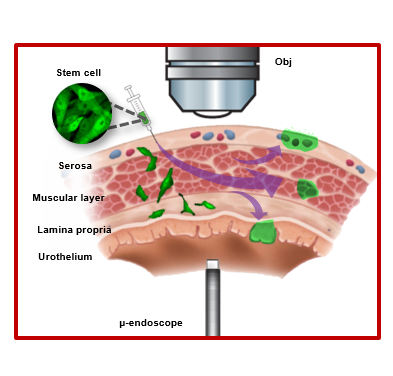
Stem cell therapy
Injection of stem cells into tissues can assist in tissue regeneration, not only through direct regeneration but also by breaking inflammatory feedback loops. With cellular-resolution endoscopic probes and fluorescently-tagged stem cells, the spread of these stem cells in live tissue and the mechanisms behind their regenerative effects can be studied without the need for highly invasive surgery or histology, making previously prohibitively complex or costly biological studies possible.
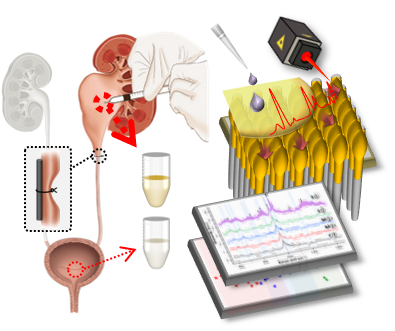
Raman spectroscopy for diagnosis
Advanced diagnosis is possible when molecules or biomarkers of disease are characterized by Raman spectroscopy. We combine computational techniques with our Raman spectroscopy system to find features which distinguish well-functioning tissues from diseased tissues. Between the minimally-invasive nature of spectroscopy and the ability of microendoscopes to extend this analysis to living tissues, this promises to be a powerful tool for the clinician.
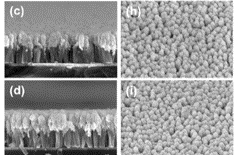
Surface-enhanced Raman spectroscopy (SERS) chip fabrication
Nanostructured surfaces can be used to enhance the signal from Raman spectroscopy, allowing more accurate diagnoses with smaller samples. We specialize in the prototyping and manufacture of zinc-oxide nanorod substrates. These substrates are non-toxic, allowing the culturing of cells from biopsy samples, and can be tailored to filter for biomarking molecules of a particular size.
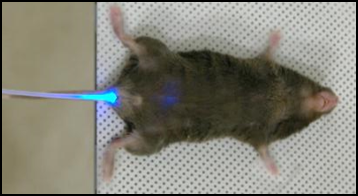
Photodynamic therapy
Light can be used to selectively kill cancer cells with the application of photosensitizing compounds, which emit cancer-killing reactive oxygen species upon illumination. Our laboratory is pursuing several aspects of this therapy, from the illuminator design to the localized application of photosensitizer via endoscopy.
* Selected papers:
- “Selective Detection of Nano-Sized Diagnostic Markers Using Au-ZnO Nanorod-Based Surface-Enhanced Raman Spectroscopy (SERS) in Ureteral Obstruction Models” international journal of nanomedicine, Volume 2020:15 P 8121—8130 ,Oct, 2020
- “Selective Targeting of Cancer Stem Cells (CSCs) Based on Photodynamic Therapy (PDT) Penetration Depth Inhibits Colon Polyp Formation in Mice” Cancers , 12(1), 203, Jan, 2020
- “Fluorescent cell-selective ablation using an adaptive photodynamic method,” Chemical Communication, Vol. 53, 12434-12437, Oct., 2017.
- “Optimization of ZnO nanorod-based Surface Enhanced Raman Scattering (SERS) substrates for bio-applications,” Nanomaterials, Vol 9 (3), 447, Mar. 2019.
- “Diagnosis in a Preclinical Model of Bladder Pain Syndrome Using a Au/ZnO Nanorod-based SERS Substrate,” Nanomaterials, Vol 9 (2), 224, Feb., 2019
- “Longitudinal intravital imaging of transplanted mesenchymal stem cells elucidates their functional integration and therapeutic potency in an animal model of interstitial cystitis/bladder pain syndrome,” Theranostics, Vol 8 (20), 5610-5624, Nov. 2018. (Featured as the Journal Cover)
- “Fluorescent cell-selective ablation using an adaptive photodynamic method,” Chemical Communication, Vol. 53, 12434-12437, Oct., 2017.
- “Improved efficacy and in vivo cellular properties of human embryonic stem cell derivative in a preclinical model of bladder pain syndrome,” Scientific Reports, Vol. 7(1), 8872, Aug. 2017.
- “Multidirectional illuminating optical fiber tip on beam expanding coreless silica fiber,” IEEE Photonics Technology Letters, Vol. 25, No. 24, pp. 2431-2434, Dec. 2013.
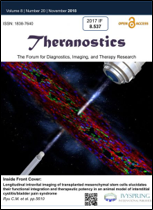
Theranostics